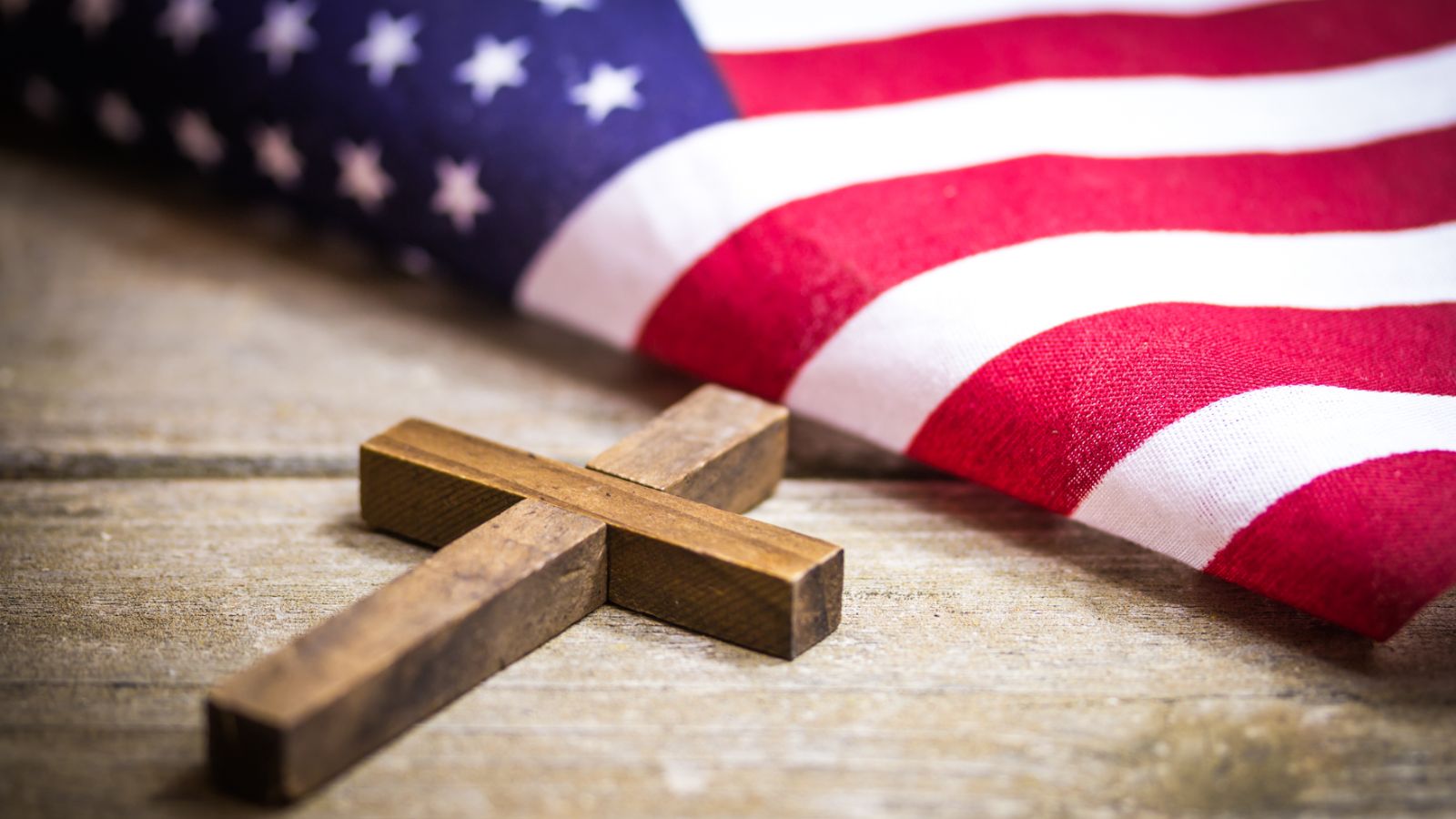America remains a deeply religious society, much more so than other wealthy Western nations. It’s also divided on the issue of religion, among political, age, and geographical lines. Here are 17 reasons why America is so divided when it comes to religion.
Teachers and Prayer in Class

Despite a 1962 Supreme Court ruling that teachers leading a class in prayer at public schools is unconstitutional, some Americans disagree. Republicans are more likely than Democrats to believe public school educators should be allowed to lead their classes in prayer.
Rising Irreligion

An increasing number of people in America claim no religious affiliation. Gallup recently reported that over the past 50 years, “much of the change in the U.S. has been a shift away from Christian religions to no religion at all” and that “slightly more than one-third of U.S. young adults have no religious affiliation.”
Social Media

Social media platforms have allowed religious ideas and practices to spread further than they could two decades ago. It’s also allowed for misinformation about religions to spread quickly, fostering misunderstanding and division in American communities.
The Role of Education in Religious Understanding

How religion is taught in schools across America can contribute to vastly different religious perceptions. Schools that lack a comprehensive religious education can lead to students’ misconceptions and general ignorance about different faiths.
Economic Disparities and Religious Affiliations

Economic inequality affects religious institutions, with wealthier communities often having more resources for their religious practices and community. Religious organizations often play a positive role in providing social services, so those in less wealthy areas may not benefit as much from them and grow to resent religion.
Urban vs. Rural Religious Landscapes

Urban areas in America tend to have more religious diversity due to their denser populations from different backgrounds. Rural areas often have less religious variety but often have deep-rooted communities that go back generations. This can lead to a rural-urban divide in how religion is practiced and viewed.
Historical Roots of Religious Freedom

The First Amendment of the Constitution includes the declaration that “Congress shall make no law respecting an establishment of religion, or prohibiting the free exercise thereof.” This led to a wide range of religious practices across the nation, but it also led some Americans to think that their beliefs should be the official state religion.
Age

Younger Americans are more far likely than their older counterparts to claim no religious affiliation. Many young Americans also associate religiosity with conservative policies that they believe harm the country.
Changing Family Structures and Religion

Family structures have evolved in America away from the traditional nuclear model. More Americans live in single-parent households or blended families, and interfaith marriages are also more common, which can massively influence religious upbringing and beliefs.
Religious Symbols on Government Property

Americans disagree on whether governments should put religious symbols on public property, with some arguing that it amounts to an endorsement of religion that goes against the First Amendment. Others believe it is constitutional and support cities and towns practicing it.
The Law and Biblical Teachings

Many Christians in America favor laws influenced by biblical teachings, but others are firmly opposed. The Pew Research Center points to a 2020 survey that revealed, “Roughly half of adults say the Bible should influence U.S. laws,” while the other half believed it should have less influence.
Evolution of Religious Institutions

Traditional religious institutions in America often face challenges from within their congregations regarding doctrine and inclusivity. Those who are unwilling to accept homosexuality or single-parent households often alienate their members.
Science, Technology, and Religious Beliefs

Scientific advancements over the past couple of centuries have challenged traditional religious beliefs. Evolution, for example, is the scientifically accepted origin of humans, but some schools and religious groups are firmly opposed to it.
The Role of Media in Shaping Religious Perceptions

Media representations of religion can reinforce negative stereotypes, but they can also provide nuanced perspectives. Americans who consume media that demonizes other religions or irreligion can grow to resent different faiths.
Political Polarization and Religion

Over the past decade, political identities in America have been increasingly tied to religious affiliations, influencing Americans’ views on social and economic religion. Axios reports that “the once-fringe ideology” of Christian nationalism is becoming more influential in “education, immigration, and health care policies,” but many Americans reject it.
Sectarianism Within Major Religions

Internal divisions within major religious traditions go back centuries and predate the founding of modern America, but they often cause division. Differences between Protestants and Catholics, along with Sunni and Shia, for example, continue to affect community relations nationwide negatively.
Federal Holidays

Christmas Day is the only religious and federal holiday, despite calls to recognize other religious holidays. Efforts to recognize holidays such as Eid al-Fitr have been unsuccessful to date, causing frustration among many Americans.
Read More: 18 Everyday Items That Have Now Become Too Expensive For the Average American

There are some items that we have to pay for every single day. But for the average American, these mundane things are becoming too expensive. In this article, we will show you 18 of these pricey day-to-day items.
18 Everyday Items That Have Now Become Too Expensive For the Average American
18 Misunderstood Acts The Bible Says Aren’t Actually Sins

People tend to assume that the Bible condemns a wide array of behaviors, but the reality might surprise you. Here, we zoom in on 18 so-called “sins” that may not be as bad as we thought.
18 Misunderstood Acts The Bible Says Aren’t Actually Sins
18 Things You’re Far Too Old To Be Doing Anymore

As we grow older, it’s a great time to reevaluate our choices and habits. In this article, we’ll explore 18 things you may still be doing even though you may be too old.
18 Things You’re Far Too Old To Be Doing Anymore
18 Things That Become Intolerable as You Get Older

As people age, they sometimes don’t find as much joy in things as they used to. An internet survey recently asked, “What are you starting to dislike more as you get older?” Here are the top 19 responses.
18 Things That Become Intolerable as You Get Older
17 American Attractions That Not Even Americans Want to Visit

The United States of America—land of the free, home of the brave, and the location of some of the most ‘unique’ tourist attractions you’ll ever lay eyes on.
Get ready to chuckle, scratch your head, and maybe even facepalm as we look at 17 American attractions that not even Americans think are worth visiting.
17 American Attractions That Not Even Americans Want to Visit

